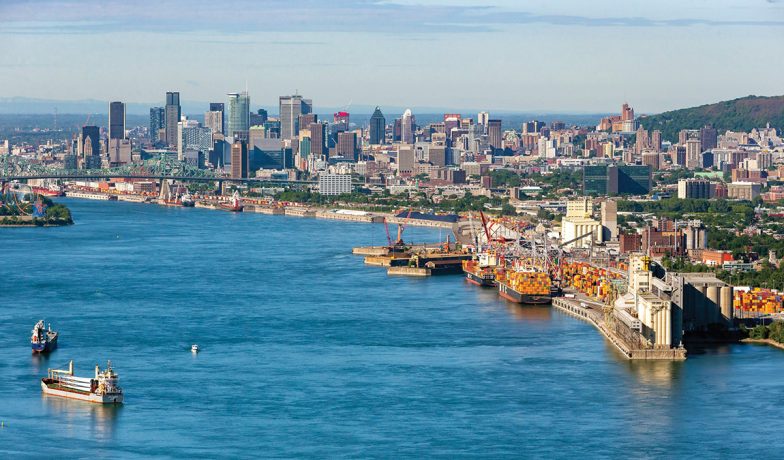Collaborating for a Green Future
Green shipping corridor created between Quebec and Newfoundland
Efforts are now underway to create the first domestic green shipping corridor between Quebec and Newfoundland. The Montreal Port Authority (MPA), Oceanex and QSL have reached an agreement to create the corridor between the Port of Montreal and the Port of St. John’s.
The green shipping corridor project aims to eliminate carbon emissions on the shipping route between the two ports. The project will consolidate the sustainable future of one of Eastern Canada’s most important shipping routes, which carries close to 500,000 metric tons of cargo (containerized and non-containerized) per year. For the supply of food products, the shipping route accounts for about 100 operations per year and has a trade balance of about 85 percent in exports to St. John’s and 15 percent in imports. While shippers utilizing this route already reduce the emissions for freight transportation to Newfoundland by more than 80 percent when compared to road transport, the partners are looking to go beyond that.
The Port of Montreal, Oceanex and QSL plan to work on implementing and using alternative fuels and direct electrification technologies. According to analyses, the carbon footprint of freight transport between the Port of Montreal and Port of St. John’s could be reduced by 27,000 metric tons of diesel and 87,000 metric tons of GHG emissions per year.
A Bigger Picture
This project is part of a collective effort by shipping industry stakeholders to accelerate the energy transition and is in line with the Ten Principles of the United Nations Global Compact and the AIVP 2023 Agenda. As part of this effort, the Port of Montreal plans to become carbon neutral by 2025. QSL has made a commitment to accelerate decarbonization by collaborating with stakeholders to identify and implement effective greenhouse gas (GHG) reduction actions. Meanwhile, Oceanex has developed both fleet and land-based plans to measure environmental performance and minimize its footprint.

Winding Down
As the Great Lakes-St. Lawrence Seaway System approaches its seasonal closure, the rhythm of maritime commerce slows. The Montreal–Lake Ontario section will cease transits after December 24, with all ships required to clear... Read More

Algoma Steel to Lay Off 1,000 Workers, Close Blast Furnace
Algoma Steel plans to lay off about 1,000 workers and close its blast furnace and coke making operations in early 2026. Algoma cites the high tariffs imposed by U.S. President... Read More

